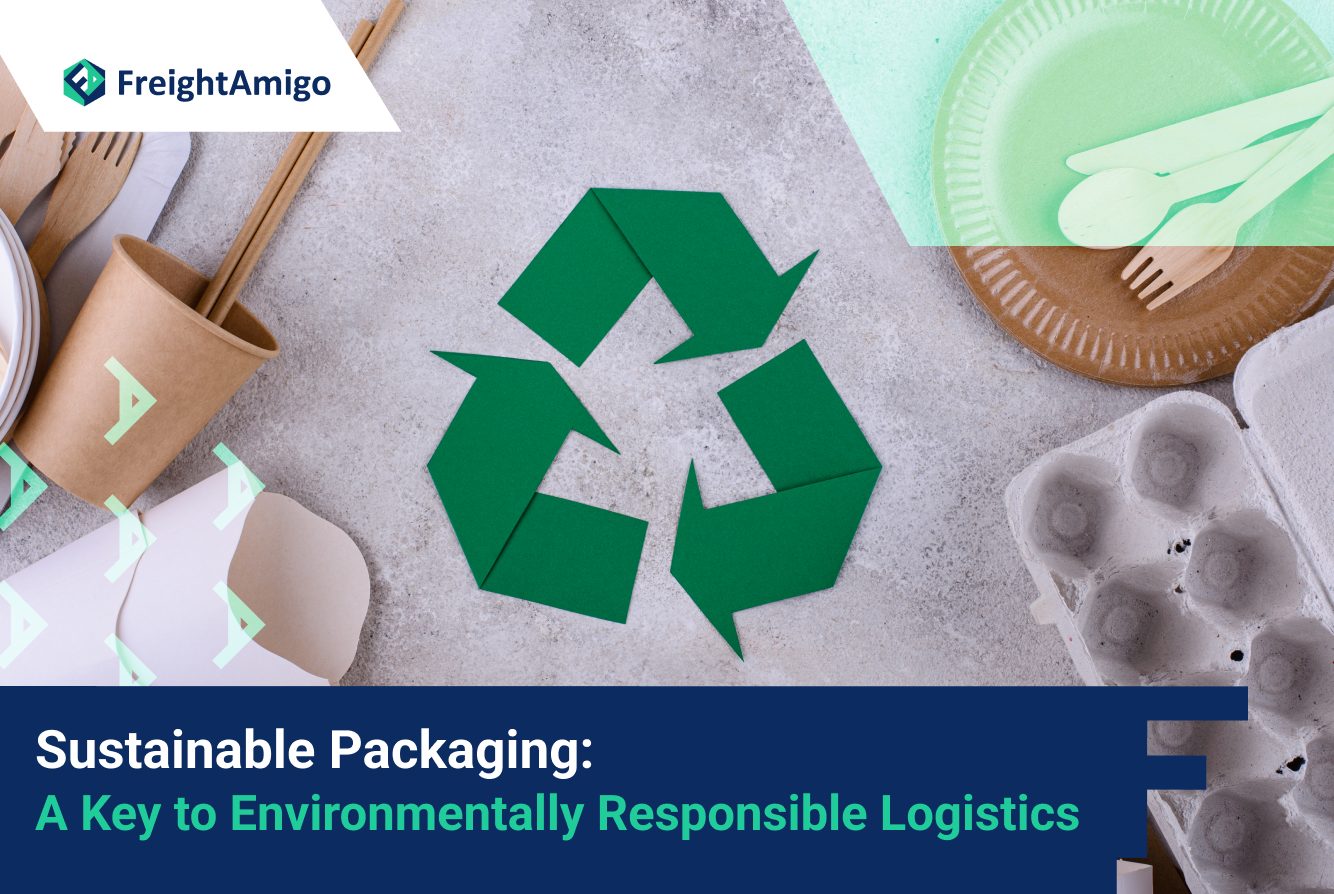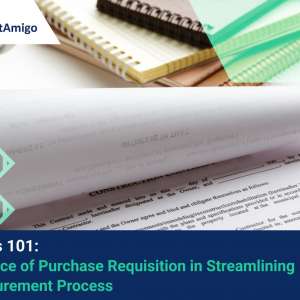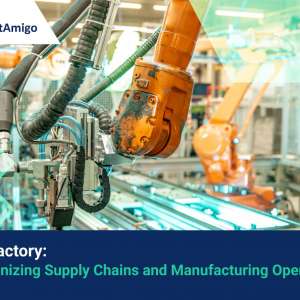In today’s world, where environmental consciousness is on the rise, businesses are increasingly focusing on sustainable practices throughout their supply chains. One crucial aspect of this sustainability movement is sustainable packaging. By adopting eco-friendly packaging solutions, businesses can significantly reduce waste, lower their carbon footprint, and optimize supply chain efficiency. This article explores the importance of sustainable packaging in logistics and its impact on the environment.
Author Name:Tiffany Lee – Marketing Analyst at FreightAmigo
Want To Compare The Best Express, Air Freight, Sea Freight, Rail Freight & Trucking Rates So As To Have Better Control On Cost?
1. Introduction
In recent years, there has been a growing concern about the environmental impact of packaging materials and the need for sustainable alternatives. Sustainable packaging aims to minimize the negative environmental effects of packaging while maintaining functionality and meeting consumer needs. It involves the use of eco-friendly materials, efficient design, and responsible disposal practices. By adopting sustainable packaging, businesses can contribute to the conservation of natural resources, reduction of waste, and mitigation of climate change.
2. The Need for Sustainable Packaging
Environmental Impact of Traditional Packaging
Traditional packaging materials, such as plastic and non-recyclable materials, have a significant environmental impact. They contribute to the depletion of natural resources, increase greenhouse gas emissions, and generate large amounts of waste that ends up in landfills or pollutes the oceans. For example, single-use plastics, such as plastic bags and packaging films, take centuries to decompose and often end up in marine ecosystems, endangering marine life.
Benefits of Sustainable Packaging
On the other hand, sustainable packaging offers a range of benefits for businesses and the environment. Some of the key advantages include:
• Resource Conservation: Sustainable packaging focuses on using renewable and recyclable materials, reducing the reliance on finite resources.
• Waste Reduction: By adopting sustainable packaging practices, businesses can minimize waste generation and promote recycling and composting.
• Lower Carbon Footprint: Sustainable packaging materials, such as biodegradable plastics or plant-based materials, have a lower carbon footprint compared to traditional packaging materials.
• Brand Reputation: Consumers are increasingly conscious of sustainable practices and prefer brands that prioritize environmental responsibility. Adopting sustainable packaging can enhance a company’s brand reputation and attract eco-conscious consumers.
• Cost Savings: While initial investments in sustainable packaging solutions may be higher, businesses can achieve long-term cost savings through reduced waste disposal fees and improved supply chain efficiency.
3. Sustainable Packaging Solutions
To embrace sustainable packaging, businesses have several options when it comes to choosing eco-friendly materials and design strategies. Here are some of the most commonly used sustainable packaging solutions:
Biodegradable Packaging Materials
Biodegradable packaging materials are designed to break down naturally over time, returning to the environment without causing harm. These materials can be made from plant-based sources, such as cornstarch-based plastics or biodegradable paper. Biodegradable packaging offers an environmentally friendly alternative to traditional plastics, reducing the reliance on fossil fuels and minimizing waste.
Recyclable Packaging Materials
Recyclable packaging materials can be processed and reused to create new products. Examples of recyclable materials include cardboard, paper, glass, and certain types of plastics, such as PET and HDPE. By using recyclable materials, businesses can contribute to the circular economy and reduce the demand for virgin materials.
Compostable Packaging Materials
Compostable packaging materials are designed to break down in composting systems, turning into nutrient-rich soil. These materials are typically made from plant-based sources, such as bioplastics derived from corn or sugarcane. Compostable packaging offers a sustainable alternative to traditional packaging, as it reduces waste and supports organic waste management practices.
Minimalistic Packaging
Minimalistic packaging focuses on reducing the amount of packaging materials used while maintaining product integrity and safety. It involves eliminating unnecessary layers, reducing package sizes, and optimizing the use of space. By adopting minimalistic packaging, businesses can minimize material consumption, reduce waste, and enhance the overall customer experience.
4. Implementing Sustainable Packaging in Logistics
Implementing sustainable packaging practices in logistics requires a holistic approach that involves collaboration with packaging suppliers, optimizing packaging design, and streamlining packaging processes. Here are some key steps for successful implementation:
Collaborating with Packaging Suppliers
Collaboration with packaging suppliers is crucial for adopting sustainable packaging solutions. Businesses should work closely with suppliers to identify eco-friendly materials, explore innovative packaging designs, and ensure the availability of sustainable options. By establishing strong partnerships with suppliers, businesses can drive the adoption of sustainable packaging throughout the supply chain.
Optimizing Packaging Design
Optimizing packaging design is essential for sustainable packaging. Businesses should consider factors such as material efficiency, right-sizing packaging, and using design techniques that minimize waste and enhance product protection. By optimizing packaging design, businesses can reduce material consumption, lower shipping costs, and improve overall sustainability.
Streamlining Packaging Processes
Streamlining packaging processes is another important aspect of sustainable packaging in logistics. Businesses should analyze their packaging workflows, identify areas of inefficiency, and implement automation and technology solutions to improve productivity and reduce waste. Streamlined packaging processes not only lead to cost savings but also contribute to the overall sustainability of the supply chain.
5. The Role of FreightAmigo in Sustainable Packaging
FreightAmigo plays a pivotal role in promoting sustainable packaging practices and integrating them into the logistics process. Through collaboration with businesses and packaging suppliers, FreightAmigo helps drive the adoption of sustainable packaging solutions that reduce waste, lower carbon footprint, and optimize supply chain efficiency. By leveraging its expertise in sustainable logistics, FreightAmigo enables businesses to enhance their brand reputation, attract eco-conscious consumers, and contribute to a greener future.
Collaborating with Businesses
FreightAmigo collaborates with businesses of all sizes to assess their packaging needs and identify sustainable alternatives. By understanding the specific requirements and challenges faced by each business, FreightAmigo can recommend tailored sustainable packaging solutions that align with their goals and values. This collaboration ensures that businesses can transition to sustainable packaging seamlessly and effectively.
Reducing Waste and Carbon Footprint
By adopting sustainable packaging practices, businesses can significantly reduce waste generation and carbon footprint. FreightAmigo assists businesses in implementing packaging strategies that minimize material consumption, optimize packaging design, and promote recycling and composting. Through waste reduction and efficient packaging, FreightAmigo helps businesses achieve their sustainability targets and contribute to a more environmentally responsible supply chain.
Enhancing Brand Reputation
In today’s competitive market, brand reputation is critical for business success. FreightAmigo recognizes the importance of environmental responsibility in shaping brand perception. By integrating sustainable packaging practices into the logistics process, FreightAmigo enables businesses to enhance their brand reputation as environmentally conscious organizations. This, in turn, attracts eco-conscious consumers who value businesses that prioritize sustainability.
6. Sustainable Logistics: Integrating Packaging and Transportation
Sustainable packaging and transportation go hand in hand when it comes to promoting environmentally responsible practices in the supply chain. By optimizing both aspects, businesses can achieve greater overall sustainability and efficiency. Here are some key considerations for integrating packaging and transportation:
Green Transportation Practices
Adopting green transportation practices is crucial for sustainable logistics. This includes using alternative fuel vehicles, optimizing delivery routes, and implementing efficient transportation management systems. By reducing emissions and energy consumption in transportation, businesses can minimize the environmental impact of their supply chains.
Efficient Route Planning
Efficient route planning plays a significant role in sustainable logistics. By optimizing delivery routes, businesses can minimize fuel consumption, reduce carbon emissions, and improve overall transportation efficiency. Integrated route planning software and real-time data analysis enable businesses to make informed decisions and optimize their transportation operations.
Packaging Optimization for Transportation
Another important aspect of sustainable logistics is optimizing packaging for transportation. Packaging materials and design should be chosen carefully to ensure product protection while minimizing material usage and waste. Additionally, businesses should consider stackability, weight distribution, and compatibility with transportation equipment to maximize efficiency and reduce costs.
Conclusion
Sustainable packaging plays a vital role in promoting environmentally responsible logistics and supply chain practices. By adopting eco-friendly materials, optimizing packaging design, and streamlining packaging processes, businesses can significantly reduce waste, lower their carbon footprint, and enhance their brand reputation. Collaborating with packaging suppliers and supply chain partners, like FreightAmigo, is crucial for successful implementation and integration of sustainable packaging solutions. Together, FreightAmigo and sustainable packaging drive environmentally responsible practices throughout the logistics process, fostering a more sustainable and responsible approach to packaging and transportation. Embracing sustainable packaging not only benefits businesses but also contributes to a greener future for generations to come.
There Are Different Options For Cargo Transportation. If You Want To Choose The Most Convenient And Suitable Solution, It Is Best To Have The Full Support Of Logistics Experts! If You Are Planning To Ship Goods Overseas, Please Go To The FreightAmigo Page For Inquiries.
===
Read More:
Waste Reduction in the Supply Chain: Optimizing Efficiency for a Greener Future
【Logistics News】Green Shipping: New Zero-emission Ship Design
【Green Logistics】Carbon Reduction Policies Bring Benefits for Industry Sectors
===
If you have any inquiries on logistics/supply chain, feel free to contact FreightAmigo now:
Chat with us online OR
Phone : +852 28121686
WhatsApp: +852 27467829









































